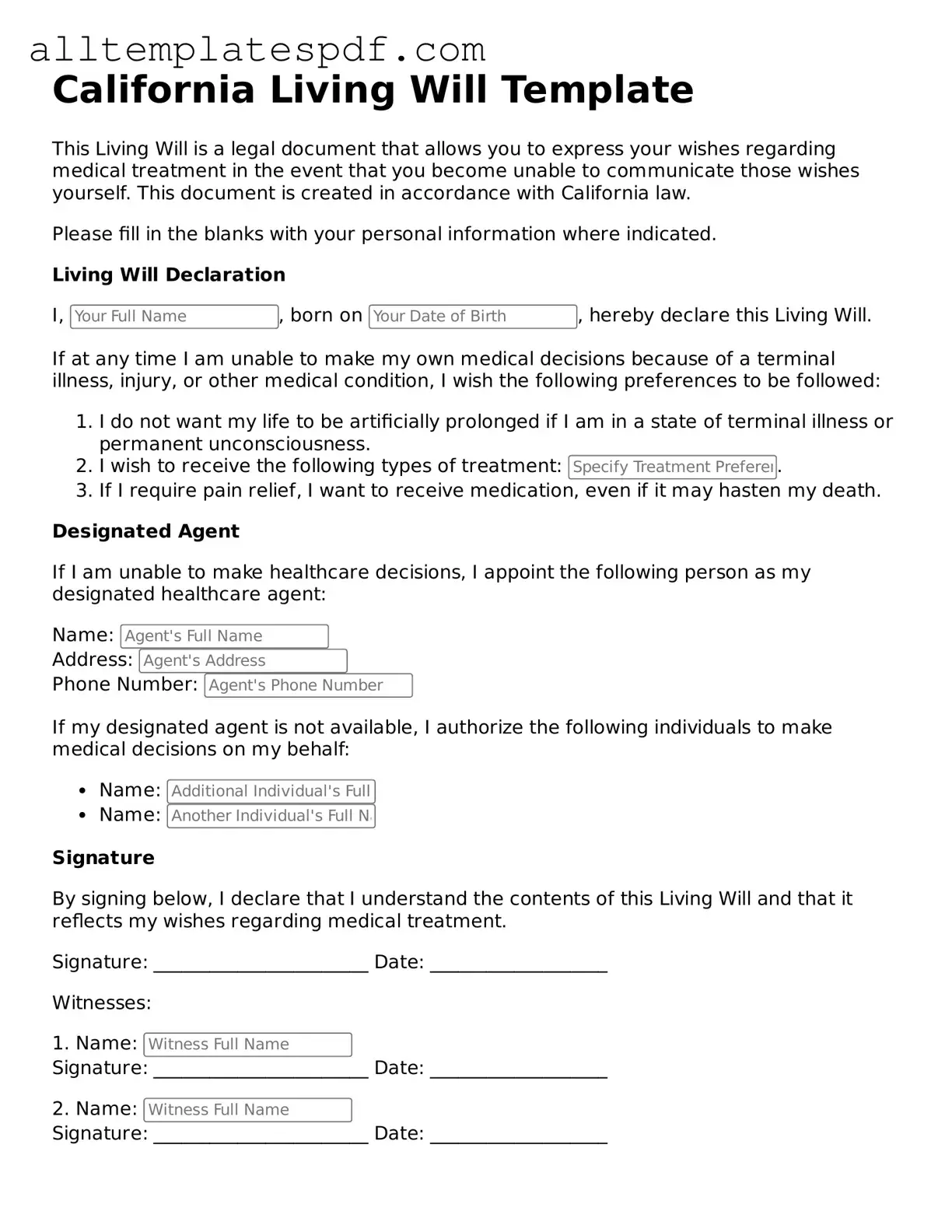Filling out a California Living Will form is an important step in ensuring that your healthcare wishes are respected. However, many individuals make mistakes during this process that can lead to confusion or complications later on. Understanding these common errors can help you avoid them and create a clear and effective document.
One common mistake is not being specific about medical preferences. Individuals may write vague statements that do not clearly outline their wishes regarding life-sustaining treatments. For example, simply stating "I do not want to be kept alive" can lead to misunderstandings. It is essential to specify which treatments you do or do not want, such as artificial nutrition or resuscitation efforts.
Another frequent error is failing to sign and date the form properly. A Living Will must be signed by the individual creating it, and it must also include the date of signing. If this step is overlooked, the document may be considered invalid. This can lead to healthcare providers not being able to follow your wishes in a critical situation.
Some people also neglect to discuss their Living Will with family members or healthcare proxies. Open communication is vital. When loved ones are unaware of your wishes, they may struggle to make decisions on your behalf. By having conversations about your preferences, you can ensure that your choices are understood and respected.
Additionally, individuals sometimes forget to update their Living Will when their circumstances change. Life events such as a new diagnosis, changes in family dynamics, or shifts in personal beliefs can all impact your healthcare preferences. It is important to review and revise your Living Will periodically to reflect your current wishes accurately.
Lastly, many individuals do not consider the need for witnesses or notarization. While California does not require a Living Will to be notarized, having witnesses can add an extra layer of validity to the document. Ensuring that the form is signed in front of witnesses can help avoid potential disputes about its authenticity in the future.
